
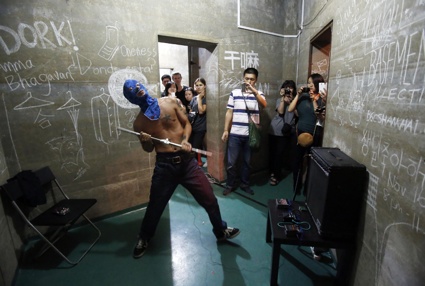 Stacked rooms. Performance
Stacked rooms. Performance
Make+ is a Shanghai-based programme that stimulates collaborations between creativity, technology and science. Its main motivation is to ‘make ideas happen’.
The recipe is quite simple: an individual comes with an idea, a team forms around it, mentors join in and guide the team along the way. At the end of the process, the idea is made reality. Participants come with all types of backgrounds, experiences and perspectives. They can be fashion designers, hardware engineers or painters.
The experimental and not-for-profit organisation also organizes educational workshops, talks and exhibitions that further encourage exchanges and raise public awareness about the kind of creativity that emerges when people from different professions meet and share ideas.
I met Sophia Lin, the Director of Make+, a few weeks ago. We were both giving a talk at the same moment at the latest edition of the Lift Conference in Geneva. Sophia is also the co-founder of Basement 6 Collective, a studio and community space located in an old bunker and dedicated to promoting the arts in Shanghai.
Since i missed Sophia’s presentation in Switzerland, i thought that the best way to catch up with the activities of Make+ would be to interview her:
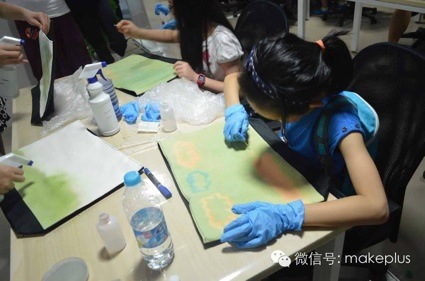 2014 Science Hack Day
2014 Science Hack Day
Hi Sophia! How big is Make+? How many people are working on the program?
Make+ is supported by volunteers only. We have roughly 9 core volunteers, and 30+ volunteers who help out whenever it’s needed.
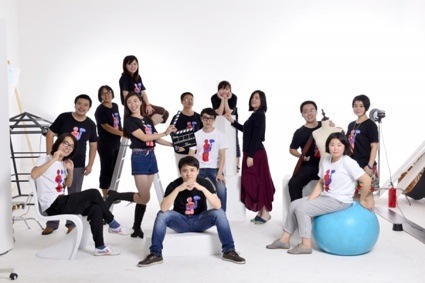 The 2014 Make+ team
The 2014 Make+ team
The Make+ program encourages cross-disciplinary collaboration. How do you make these cross-disciplinary collaborations happen? Is it by acting as a go-between? By making resources available? etc.
We do a lot of things to encourage these collaborations happen. We host events where professionals and students from different professions can meet and collaborate, we act as a resource database for those who need to reach the other end. We have also started a research project on methods of crossover collaboration.
Are there like-minded people, institutions organizations in Shanghai and in the rest of China? Who does Make+ collaborate with? Who are its allies?
We are seeing more and more institutions especially the universities opening their doors to these kind of experiments by having collaborative courses and programs. Make+ collaborates with art museums, galleries, makerspaces, libraries, hardware companies and foundations.
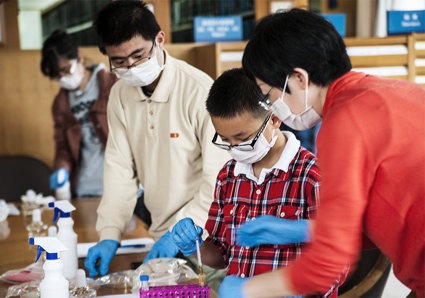 DIY biotech workshop. “Painting Class with E. Coli”
DIY biotech workshop. “Painting Class with E. Coli”
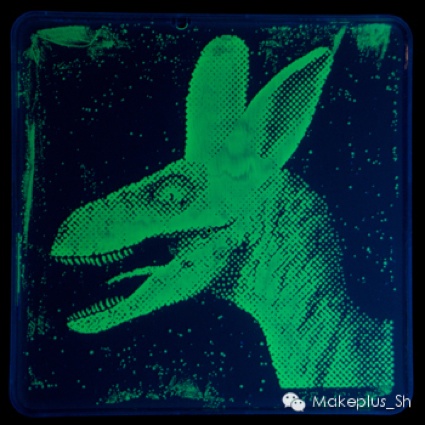 Workshop Painting with Bacteria
Workshop Painting with Bacteria
You told me in a previous conversation that Make+ doesn’t have its own space. So how do you manage to organize meetings, workshops, exhibitions?
We usually host our events in our partners’ spaces. We work hard.
And apart from having your own space, what are the biggest challenges that the program encounters?
Having a steady funding is our biggest challenge. Our currently method is to offset our cost by charging the event. But in reality, the income usually only pays for the materials and instructor, but never the organizers.
You also told me that you work with artists who might have a fairly classical view on art and with science & tech people who are not so used to working with artists. What makes these two worlds dialogue and collaborate? And does their perspective on their own discipline change after one of your Make+ events?
Yes, this is a very challenging problem. People have to really WANT to collaborate with the others to make it work. We learned from our experience that a forged relationship without a strong motive is hardworking and tiring. However, the participants who have had a successful collaborations often goes on to try more.
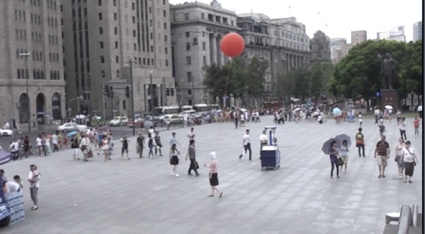 Saoirse Higgins, Overview. Video still-user with headpiece and balloon above. The Bund, 20th July 2013.
Saoirse Higgins, Overview. Video still-user with headpiece and balloon above. The Bund, 20th July 2013.
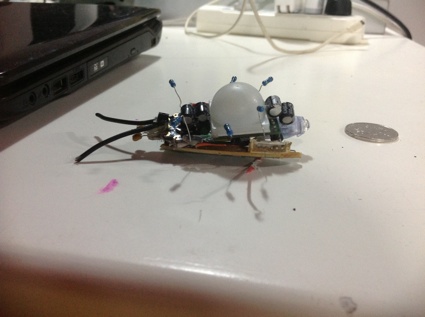 Ji Jiaqing, Firefly
Ji Jiaqing, Firefly
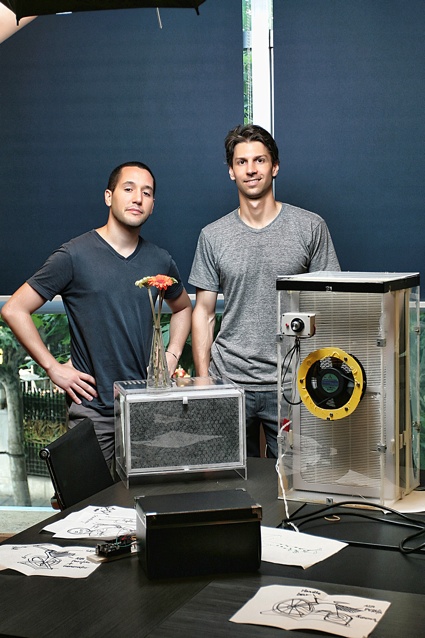 Berni War, Vincent Harkiewicz and Brad Jester, Aaaiiirrr (Open Source Air Filter)
Berni War, Vincent Harkiewicz and Brad Jester, Aaaiiirrr (Open Source Air Filter)
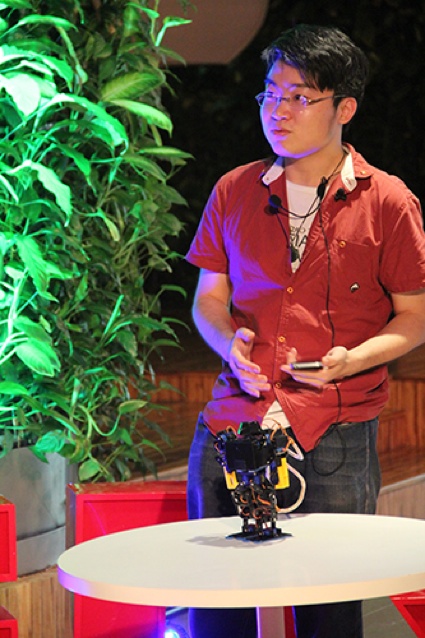 Kami, DT Robot at 2013 TedxTheBund
Kami, DT Robot at 2013 TedxTheBund
Could you give us some examples of projects developed during Make+ workshops?
In 2013, our creative camp incubate a fresh team that consists of designers, artists and engineer. They do not know each other at the beginning, and have never collaborate with other discipline before. After some very challenging weeks, they built a “emotion” room that responded to people’s brainwave. The room would try to make you angry if you are calm, and try to calm you down if you are agitated. The team members became best friend and went on to collaborate on many projects.
Last year in 2014, we incubate a long-term not for profit project, where artists, designers and scientists would lead people to research trips to China’s old villages to see if there anything they can help with.
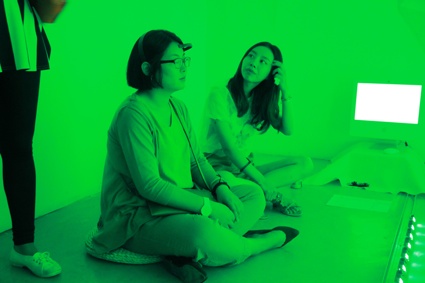 Installation built by one of the teams of the 2013 creative camp. The audience was wearing a brainwave detector. If you are angry, the ambient light turns blue or green, if you are calm, the light turns red
Installation built by one of the teams of the 2013 creative camp. The audience was wearing a brainwave detector. If you are angry, the ambient light turns blue or green, if you are calm, the light turns red
What’s next for Make+?
In 2015, apart from our regular programming and incubator programs, we have started a long-term research project on methods for a successful crossover collaborations. We feel that we need to learn from the successful teams and projects around the world about how to initiate a successful collaborations.
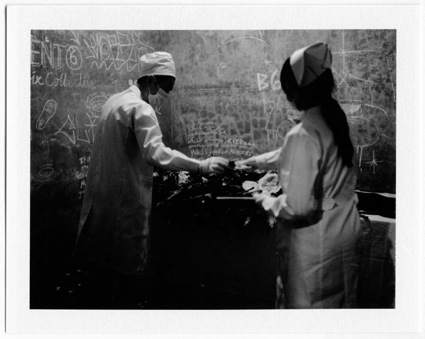 Stacked rooms. Performance by Moyo
Stacked rooms. Performance by Moyo
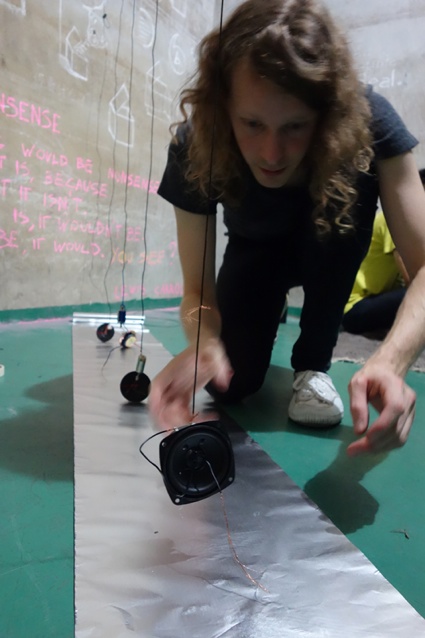 Stacked rooms. Performance by Olaf Hochherz
Stacked rooms. Performance by Olaf Hochherz
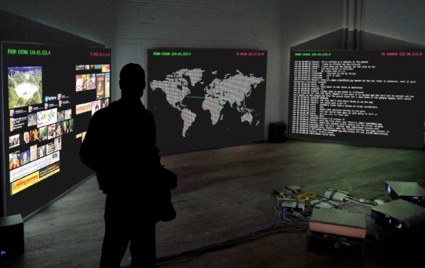 Nicolas Maigret, Clement Renaud and Lionel Radission, The Ether Mashup
Nicolas Maigret, Clement Renaud and Lionel Radission, The Ether Mashup
Thanks Sophia!
